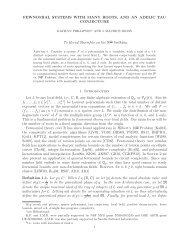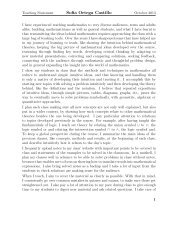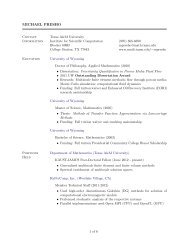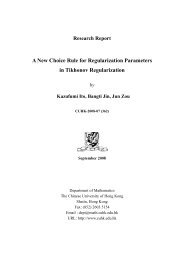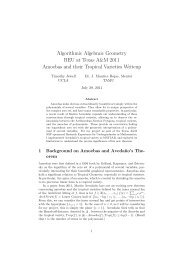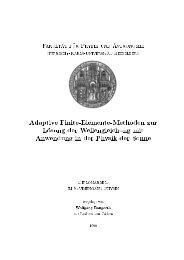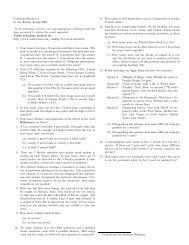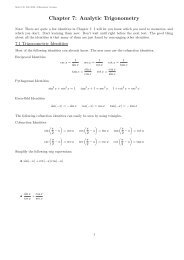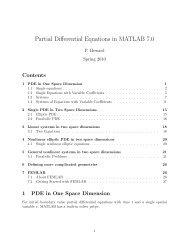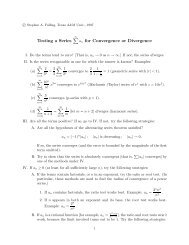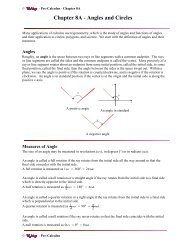Tensors: Geometry and Applications J.M. Landsberg - Texas A&M ...
Tensors: Geometry and Applications J.M. Landsberg - Texas A&M ...
Tensors: Geometry and Applications J.M. Landsberg - Texas A&M ...
You also want an ePaper? Increase the reach of your titles
YUMPU automatically turns print PDFs into web optimized ePapers that Google loves.
24 1. Introduction<br />
Just as phylogenetic trees, <strong>and</strong> more generally Bayes models, use graphs<br />
to construct varieties in spaces of tensors that are useful for the problem at<br />
h<strong>and</strong>, in physics one uses graphs to construct varieties in spaces of tensors<br />
that model the “feasible” states. The precise recipe is given in §14.1, where<br />
I also discuss geometric interpretations of the tensor network states arising<br />
from chains, trees <strong>and</strong> loops. The last one is important for physics; large<br />
loops are referred to as “1-D systems with periodic boundary conditions”<br />
in the physics literature <strong>and</strong> are the prime objects people use in practical<br />
simulations today.<br />
To entice the reader uninterested in physics, but perhaps interested in<br />
complexity, here is a sample result:<br />
Proposition 1.5.2.1. [213] Tensor networks associated to graphs that are<br />
triangles consist of matrix multiplication (up to relabeling) <strong>and</strong> its degenerations<br />
See Proposition 14.1.4.1 for a more precise statement. Proposition 1.5.2.1<br />
leads to a surprising connection between the study of tensor network states<br />
<strong>and</strong> the geometric complexity theory program mentioned above <strong>and</strong> discussed<br />
in §13.6.<br />
1.6. <strong>Geometry</strong> <strong>and</strong> representation theory<br />
So far we have seen the following<br />
• A key to determining the complexity of matrix multiplication will<br />
be to find explicit equations for the set of tensors in Cn2⊗Cn2 ⊗Cn2 of border rank at most r in the range 3<br />
2 n2 ≤ r ≤ n 2.38 .<br />
• For flourescence spectroscopy <strong>and</strong> other applications, one needs to<br />
determine the ranks of tensors (of small rank) in R I ⊗R J ⊗R K <strong>and</strong><br />
to decompose them. Equations will be useful both for determining<br />
what the rank of an approximating tensor should be <strong>and</strong> for<br />
developing explicit algorithms for tensor decomposition.<br />
• To study cumulants <strong>and</strong> blind source separation, one is interested<br />
in the analogous questions for symmetric tensor rank.<br />
• In other applications discussed in this book, such as the GCT program<br />
for the Mulmuley-Sohoni variant of P v. NP, <strong>and</strong> in algebraic<br />
statistics, a central goal is to find the equations for other algebraic<br />
varieties arising in spaces of tensors.<br />
To find equations we will exploit the symmetries of the relevant varieties.<br />
We will also seek geometric descriptions of the varieties. For example,<br />
Example 1.2.6.1 admits the simple interpretation that the limit of the sequence<br />
of secant lines is a tangent line as illustrated in Figure 2.4.5. This



